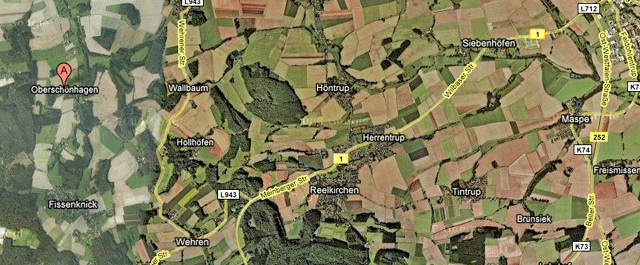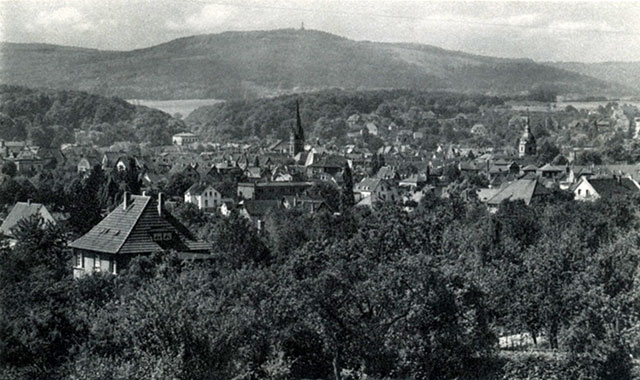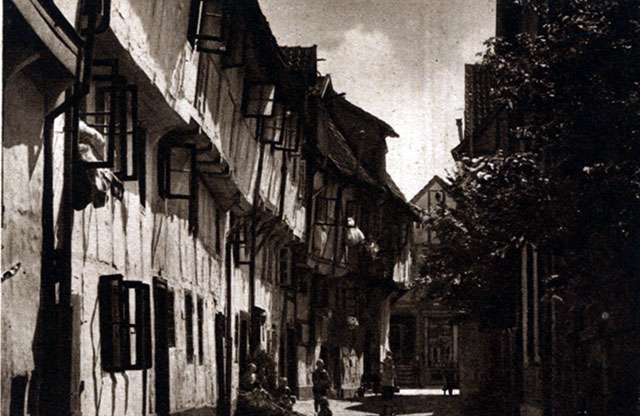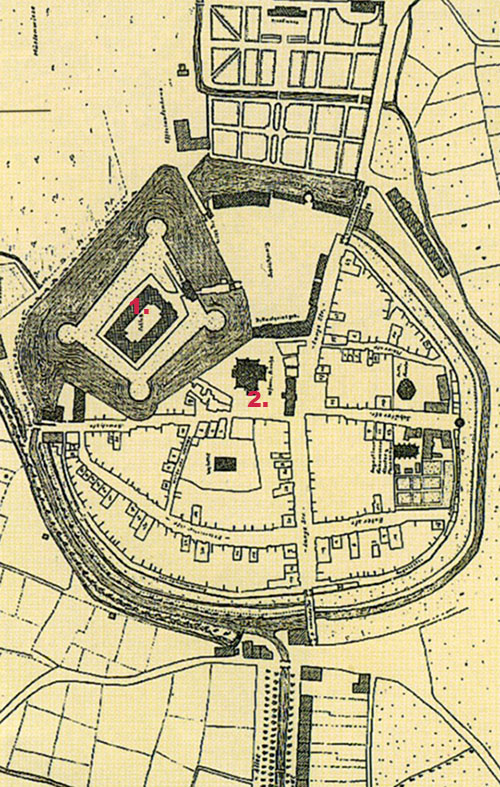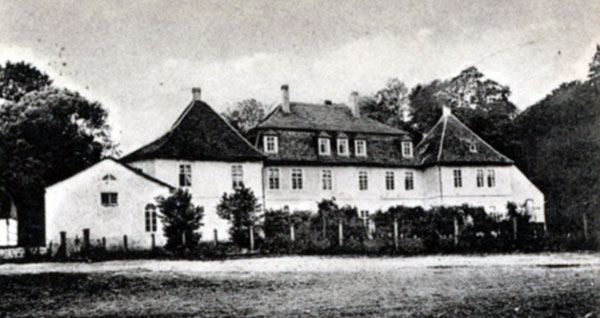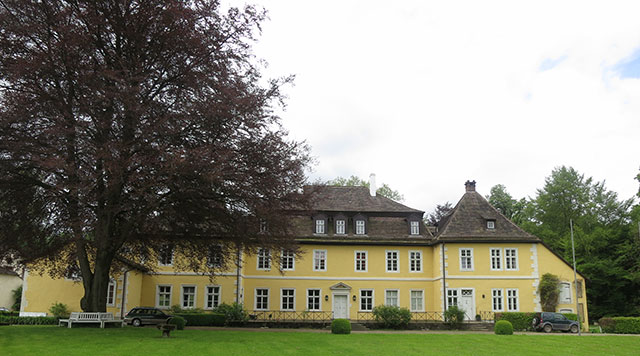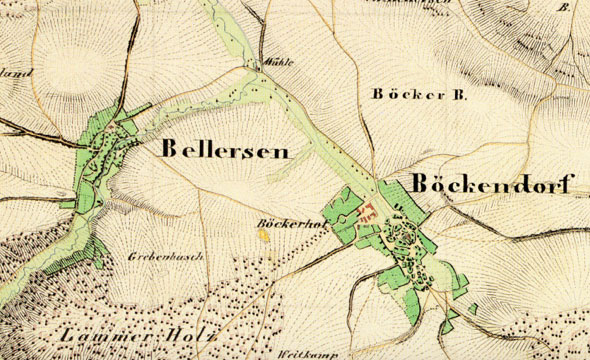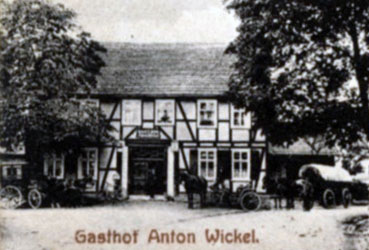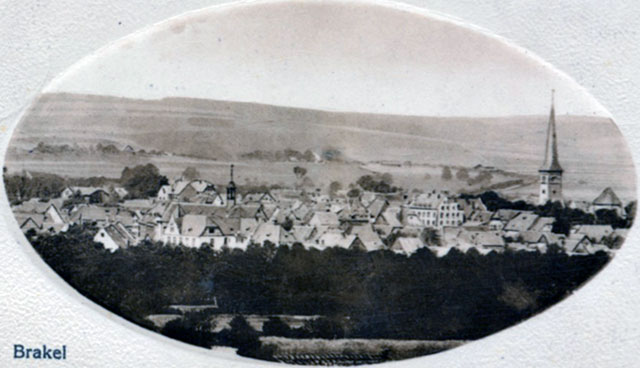Erxmeyers and Related Families
My husband's paternal great grandmother was Melosine Erxmeyer. She immigrated to Hoboken, New Jersey with her mother and several siblings. Her family originally came from Maspe in Lippe, Germany. They subsequently moved to Bellersen in Westphalia before moving to Walsrode, then Bremerhaven and finally emigrating to the USA.
The church records in Germany show that the name itself evolved over time from Erich to Erichmeyer to Erxmeyer (with a variety of spellings at all stages).
Other related families were: Be[r]ckmeyer, Duvel, E[h]lert, Eykerman, Holtz and Mollenbrock. These families lived in the villages of Maspe, Belle, Istrup and Obershönhagen.
Records for the various villages were kept in Detmold, Blomberg, Horn - Bad Meinberg, Wobbel, Reelkirchen, and Brakel.
District of Lippe
The Principality of Lippe is a historical German State located between the Weser river and the southeast part of the Teutoburger Wald (Teutoburg forest) in North Rhine-Westphalia. It became a principality in 1789 when the counts of Lippe-Detmold were granted the title of "prince". It was one of the smaller states of the German Empire and remained independent during Napoleonic times. The capital of Lippe was the town of Detmold. Towns include Blomberg and Honr-Bad Meinberg.
Church records are held Lippische Landeskirche - Archiv - Leopoldstr. 27 D-32756 Detmold Fax: 05231-976850 eMail: Krika@t-online.de. Microfilm copies are available through LDS for many of the towns in Lippe.
Civil records starting in 1875 are available at Nordrhein-Westfälische Staatsarchiv in Detmold. Nordrhein-Westfälisches Staatsarchiv Detmold, Willi-Hofmann-Str. 2, D-32756 Detmold , eMail: NWStADetmold@t-online.de
See:
German Genealogy: Lippe
Maspe, Lippe
The Erxmeyer family lived in Maspe from at least 1743. The records for the village of Maspe are in the church of the nearby village of Reelkickhen.
Major Von Friesenhausen was a sponsor to several Erxmeyer rites in the mid 1700s. The Von Freisenhausen family was in Maspe as early as 1676. They were, I believe, the local gentry.
Historisch-geographische Beschreibung der fürstlichen Lippeschen Lande By Wilhelm Gottlieb Levin von Donop, Peter Florens Weddigen, Herbert Stöwer, page 88 (Google Book)
"2. Maspe, an estate belonging to Mr. Major von Friesenhausen, which is a fief of Paderborn and "landtagsfhig" (historical political authorization). At the end of the 16th century (ca. 1590) the brothers Joachim and Christoph von Friesenhausen divided it in two parts. Joachim called his part "Oberenhof" and his male descendants stopped with Karl Levin in 1760. His sole daughter married Mr. Major von Donop zu Wöbbel, but could keep the property Oberenhof. But in the year 1789 the imperial court adjudged that the property belonged again to the family von Friesenhausen."Jeffrey Erxmeyer says that what is today № 43 Delbrücker Str. Maspe was the home of the Erichsmeier family in 1776.Translation courtesy of Jeffrey Erxmeyer January 2009
There was a census taken in 1776 indicating 11 homeowners in Maspe. (See Hausnummern in Maspe ) At Delbrucker str. 43 were Erichsmeier, 43, A Marie 45, 4 To. Lz Christian 74.*
In 1776 two dwellings were owned by Friesenhausen. Other names listed in 1776 were: Von Donopsches, Jurgensmeier, Schafer, Hering, Eikermann, Eickman, Schlingmann. One dwelling may have been empty as no name was listed.
By 1883 there were an additional 18 dwellings.
Lippische Familiennamen - Der Genealogische Abend Naturwissenschaftlicher und Historischer Verein fur das Land Lippe e.V lists the following families in Maspe and Tintrup in 1780: Albert, Beerhencke, Brencker, Brunsieck , Drunert, Eickermann, Eickmeier, Erichsmeier, Freese, Geise, Hering, Jurgensmeier, Kayser, Krop(p), Kuhlen , Laumann, Melchert, Meyer zu Freismissen, Micke(n), Mische, Papemeier, Plancke, Reese (vgl. Rese), Reine(c)ke, Rotemeier, Schafer, Schaper, Schlingmann, Schoning, Schroder, Spiecker, Steinkamp, Stoffel, Struchtrup, Vatthauer, Voigt, Voigtingmeie, and Wiese
Hausinschriften in Maspe #43 not posted.
*Notes:
- The census indicates an Erichsmeyer born circa 1733 with a wife, A. Marie born circa
1731 and possible a Christian Erxmeier born circa 1702.
- Jurgen Erichmeyer born 1743 married Anne Marie Ilsabe Berckmeyer in 1778. They lived in Maspe.
- When Jurgen Erxmeyer was baptized in 1743 no place was listed. He was the son to Johann Heinrich
Erxmeyer who also had Amelie Elizabeth of Joh. Heinrich Erichs of Maspe baptized in 1754 and
Johann Carl of Johann Heinrich Wilhelm Erichs of Maspe baptized in 1760.
- Maria Caroline Sophia of Wilhelm Erichs of Maspe 16 25 March 1763 was baptized in Reelkirchen.
Sophia Louise Amalie "Erxmeyern " of Wilhelm "Erx-meyer" of Maspe and Anna Maria geb:
Kusters of Belle was baptized in Reelkcichen in 1769. These are the closest baptisms dates to the census date of
1776.
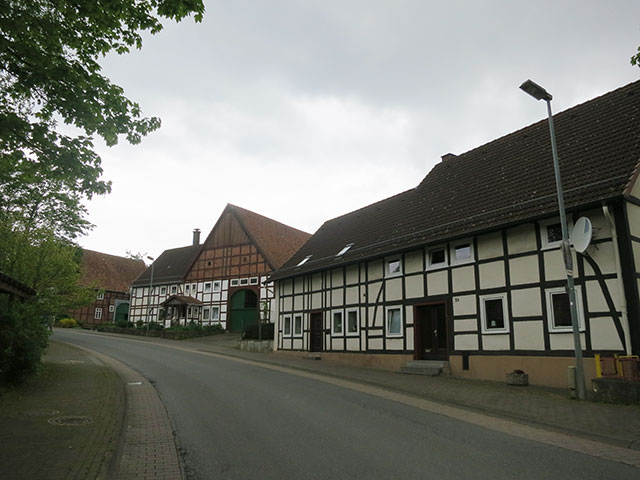
Maspe May 2014, Photo Maggie Land Blanck
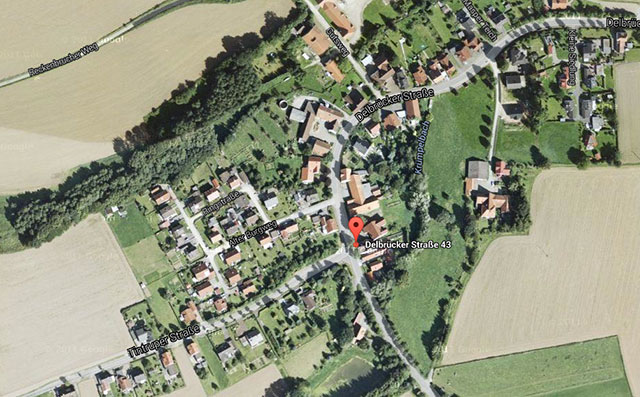
Maspe May 2014, Google map
Google map image showing 43 Delbrücker Str. Maspe. The older houses in the village are on the curve between Tintruper Strasse and Gutsweg.
Reelkirchen, Lippe
Reelkirchen was first mentioned in 1146 and the church was originally built around the same time. The Evangelical Lutheran Church in Reelkirchen served the surrounding villages including Maspe. Reelkirchen is home to the Wasserburg schloss, a moated "castle" dating to the mid 1700s. See Wasserschloss Reelkirchen. Reelkirchen also has an old Jewish Cemetery.
The Lippische Familiennamen list of 1780 includes the name"Elert" in Reelkichen.
Hausnummern in Reelkirchen 1590/1682 included Herman Eilerts and Henrich Elert at 7 -12 Mittelstrasse 30 and Fri Elert 28, Ilsabein, 28, LZ simon Jobst 61 mit Frau A Marie 62 in 1776 at the same address.
In 1776 there were 25 houses plus the castle, the parish house, the "kuster" house and the school houes.
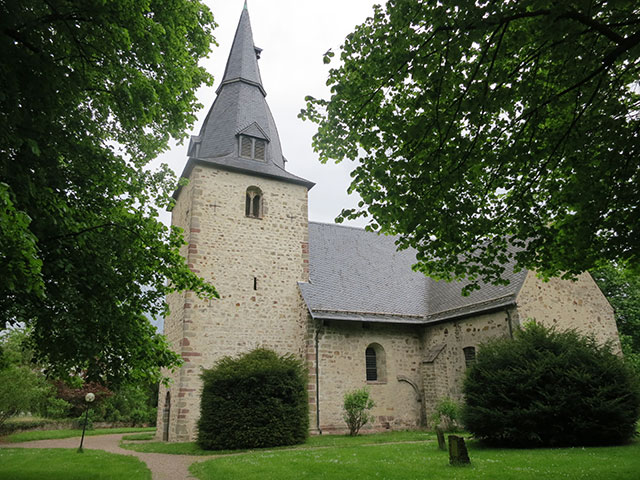
Photo Maggie Land Blanck, May 2014
The church in Reelkirchen.

Photo Maggie Land Blanck, May 2014
Baptismal font Reelkirchen church
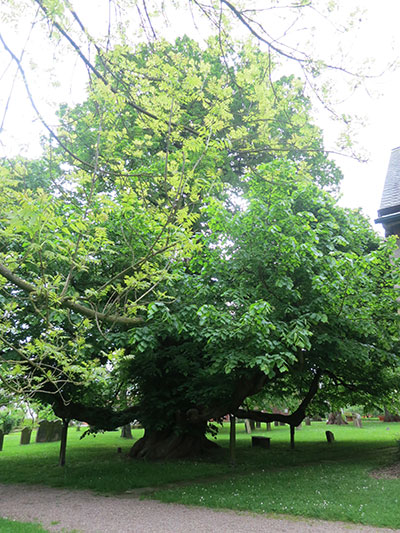
Photo Maggie Land Blanck, May 2014
1,000 year old tree in graveyard at Reelkirchen church.
Hausinschriften in Reelkirchen includes one house in Reelkirchen at #12. Reelkirchen Nr. 12 (Reith, ehemals Ehlert) Mittelstraße 30. Ab 1875 Leweke, sp. Trachte, Diekmann.
DER HERR FUHRET SEINE HEILIGEN WUNDERLICH . KANST DU MICH LIEBER GOTT WUNDERLICH FUHREN SO HILFF DURCH DEINE GNADE DAS ICH DIR AUCH WUNDERLICH FOLGE. AUCH MEIN LEBEN WANN ES DIR GEFELT UM DEINENTWILLEN IN DIE SCHANZE ZU ZUM FREUNDE BEHALTE LIEB DIEWEIL IHR VON HABE ICH DER WELT DEN 10. JULI
SCHLAGEN UND DICH ALLEIN DEN DIE WELT HAT DAS IHRE DER WELT SEIT. DARUM EUCH VON ER WELET ANNO MDCC48.
SIMON JOBST ELERT UND ANNA MARIA ELIESABETH ALBERTS M. F. H. F
1748 Simon Jobst Elert and Anna Marie Alberts.
Genealogische Daten der Erbauer: Simon Jobst Ehlert (Elers), ev., Mittelkötter in Reelkirchen, Nr. 12 [born] 27.07.1718 in Reelkirchen, [baptized] 07.08.1718 in Reelkirchen. [died] 12.07.1795 in Reelkirchen, [buried] 15.07.1795 in Reelkirchen. [married] 09.05.1738 in Reelkirchen mit Anna Maria Elisabet Albers, ev., lebte in Reelkirchen [born] 27.12.1716 (v) in Reelkirchen, - [died] 11.08.1789 in Reelkirchen. Note: Dates are European style day/month/year.See Ehlert for more information.
Belle (Neiderbelle and Oberbelle), Lippe
Adolph Erxmeyer married Henriette Ehlert of Belle in Wöbbel, Germany in 1812. Other related families who lived in Belle were Duvel and Mollenbrock. The parish church for Belle is in Wöbbel. In 1843 Neuestes und gründlichstes alphabetisches Lexicon der sämmtlichen ... By Johann Friedrich Kratzsch listed "Belle" (s. Nieder = u. Ober Belle) Today no separate place is indicated on the map for Belle. There are designations for Oberbelle and Neiderbelle.
The
House numbers for Belle in 1700 include #7 (0ld) #22 (new) Mohlenbrock -
Halbspänner [half width?] - 43 houses listed. Duvel not listed.
Hausinschriften in Belle
No. 11 contains the name Friedricke Mollenbrochs and the dates 1833 and 1834.
Births, marriages and deaths were records in Wöbbel parish church. Belle is in the district of Blomberg.
The Jederman cafe-restaurant in Detmold is housed in an old
Belle building that was transported
and rebuilt as part of the Lippisches Landesmuseum. See
Jederman im Spieker. The Spieker is a half timbered house that
was built in 1780/81 for Johan Wilhelm Lakemeir and Friderika Henrietta Gelhaus
on their farm in Belle. Johan Wilhelm Lakemeyer was born in 1727 in Belle and
baptized in Wobbel. He married Friederike Henrietta Gelhsue in 1778. He was 51 and she was
35.
The building is much transformed.
See Duvel, Ehlert,
Mollenbrock
Wöbbel, Lippe
The records for Oberbelle and Niederbelle (Belle) were registered in the parish of Wöbbel.
The Evangelical Church in Wöbbel is under the jurisdiction of Blomberg.
The church, first mentioned in 1231, is dedicated to John the Baptist.
The lower part of the tower dates from the 12th century. There are arched windows in the tower which date to the Romanesque period (medieval 6th to 10th centuries).
The nave had fallen into disrepair by the 17th century and so was reconstructed in 1699.
A door on the side of the church contains the date MDCXCIX (1699).
The "castle" was built in 1690 by the Lippe court official Lewin Moritz von Donop.
In 1843 the Baron von Donop of Wobbel, Westphilia had at least two sons. One was
Edward Pelham Brenten von Donop.
The parish records for Wobbel in the late 1600 and early 1700s indicate three "villages":
Belle, Billerbeck, and Wobbel. Based on the number of baptisms counted in 1734 and the number of confirmations
listed for several years, Belle was the largest of the three villages.
A Story and History of my Ancestors of Wöbbel, Lippe, Germany
by
Fred Richter - according to this web site the Duvel families were at #37, #46, and #58.
The page also includes a specific section on Wöbbel.
The Lippische Familiennamen list of 1780 includes the name
Düwel.
The house number list in 1830
included three listings for Duvel.
Hausinschriften in Wöbbel
See Duvel, Ehlert,
Mollenbrock
Istrup, Lippe
Anne Marie Holtzn was born in Istrup circa 1788. She married Christopher Ehlert.
Lippische Familiennamen lists "Höltcken" in Istrup.
Istrup is a village in the city of Blomberg. The church records for Istrup may be in Blomberg.
Istrup was first documented in 1361. The oldest signs of human settlement include a stone ax from the Neolithic period around 4,000 BC.
The village contains some beautiful old half timbered houses.
The house number list includes 49 houses in 1776.
There was no Holtz on the 1618/1882 list or on the 1776 list.
Einl. Jobst Höltke 59, A. Marg. 41 was listed at 18 Fruher Dorfstrasse 2 in 1776. Is this the same name?
Istrup Uber Bad Driburg, date unknown. General view of the area .
Blomberg, Lippe
Blomberg was founded circa 1231.
A chapel was erected in 1460-1462. By 1468 in was a famous place of pilgrimage.
The Blomberg Rathouse [town hall], which was erected in 1586/87, has richly embellished gable and eaves.
Castle
The tower dates to the 15th century.
The district of Blomberg includes the villages of Istrup, Maspe and Reelkirchen (and others).
(A New System of Geography: Part of Germany, viz.
Bohemia, Moravia, Lusatia ...
By Anton Friedrich Büsching, Patrick Murdoch, 1762)
Archive for records for the municipalities of Istrup, Maspe, Reelkirchen and others.
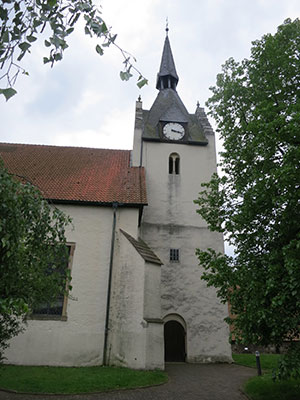
The tower Wöbbel church, 2014 (Photo Maggie Land Blanck)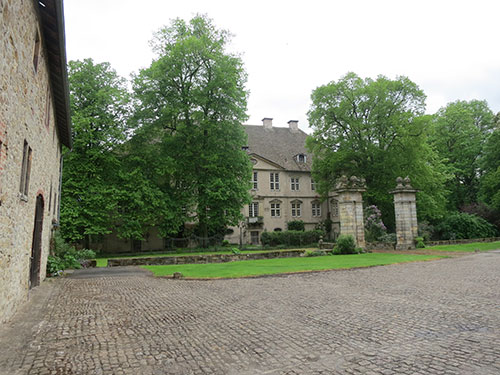
The castle Wöbbel, 2014 (Photo Maggie Land Blanck)
Postcard collection Maggie Land Blanck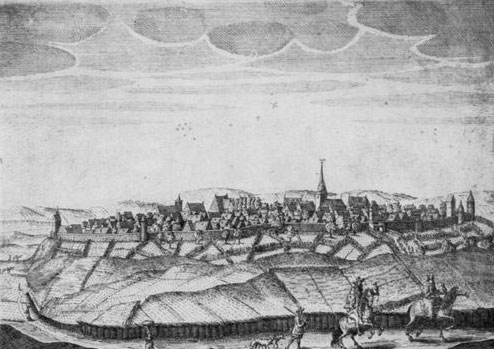
Blomberg, Artist: Elias von Lennep, 1663/66,
copper engraving, Castle Museum Detmold, collection Lippischen castle, towns and notables

Blomberg circa 1919 - Postcard collection of Maggie Land Blanck, 2104
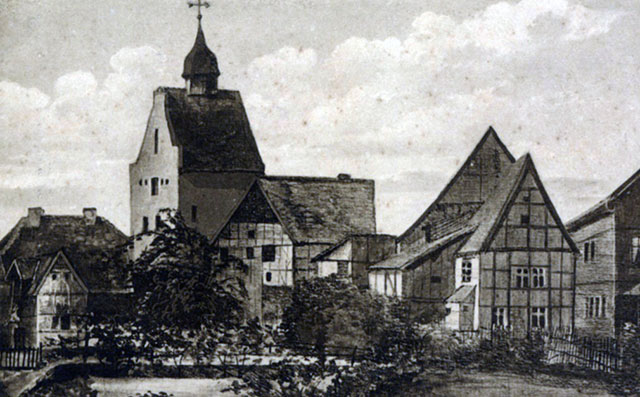
Old Blomberg - Postcard collection of Maggie Land Blanck, 2104
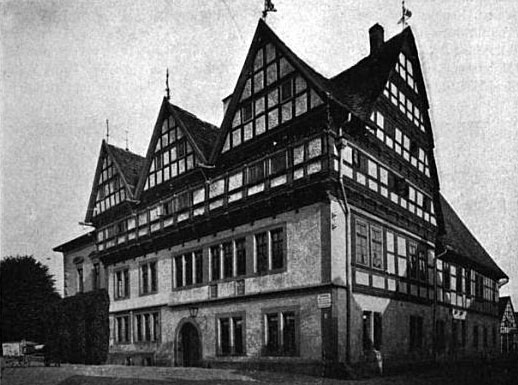
Rathaus Blomberg circa 1906 Handbuch der bürgerlichen kunstaltertümer in Deutschland ... mit ..., Volume 1
By Heinrich Bergner
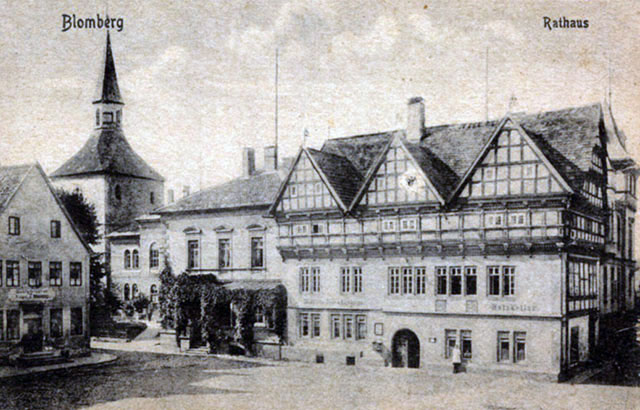
Rathaus Blomberg - Postcard collection of Maggie Land Blanck, 2104
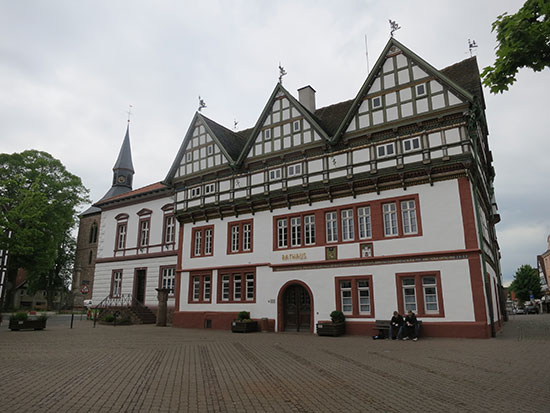
Rathaus Blomberg - Photo Maggie Land Blanck, 2104
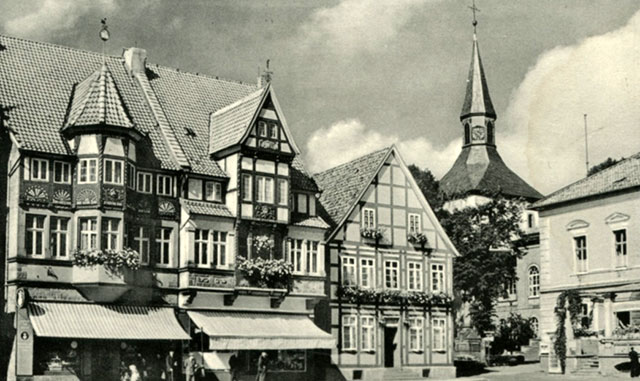
Blomberg Town square - Market Place - Postcard collection of Maggie Land Blanck, 2104

Blomberg Burg - Postcard collection of Maggie Land Blanck, 2104

Blomberg Burghof - Postcard collection of Maggie Land Blanck, 2104
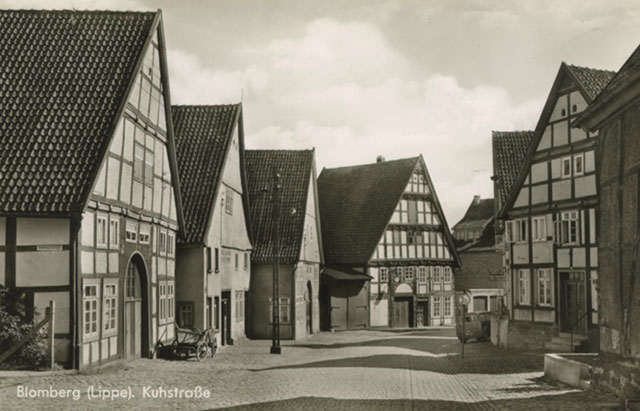
Blomberg Kuhstrasse - Postcard collection of Maggie Land Blanck, 2104
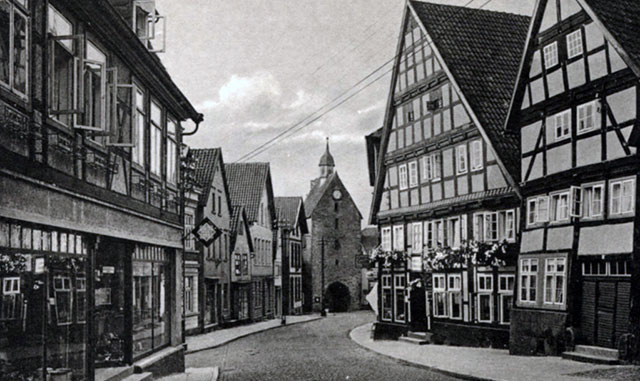
Blomberg Am Stadtoc - Postcard collection of Maggie Land Blanck, 2104
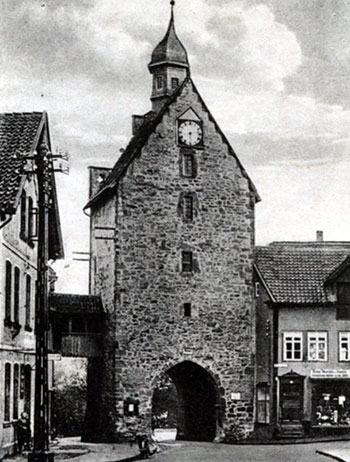
Blomberg Am Statoc - Postcard collection of Maggie Land Blanck, 2104
The prefecturate of Blomberg, in which is contained the
citadel of Blomberg, seventeen peasantships, and the church of Cappel,
Reilkircben, Wobbel and Kirchdonop.
Among other records "Citizen Recordings 1593-1835"
Stadtarchiv Blomberg
Marktplatz 1,
32825 Blomberg
Germany
Phone: +49 5235 2516
Fax: +49 5235 504610
d.zoremba @ blomberg-lippe.de
